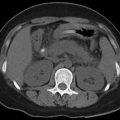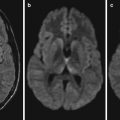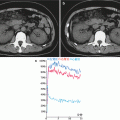© Springer Science+Business Media Dordrecht and People’s Medical Publishing House 2015
Hongjun Li (ed.)Radiology of Infectious Diseases: Volume 110.1007/978-94-017-9882-2_77. Infection and Immunity
(1)
CT Department, The Second Affiliated Hospital, Harbin Medical University, Harbin, Heilongjiang, China
(2)
Department of Radiology, City Kangan Hospital (Former City Hospital for Infectious Diseases), Mudanjiang, Heilongjiang, China
(3)
Department of Radiology, City Development District Hospital, Yantai, Shandong, China
7.1 Pathogenicity of Parasites
7.1.1 Invasive Capacity
Invasive capacity refers to the capacity of certain pathogens to invade the organism and to grow and multiply within the organism. Some pathogens can directly invade human body, such as leptospira, filariform larva of ancylostoma, and schistosome cercaria. Some gain their access to human body via digestive or respiratory tract, followed by their adherence to the intestinal or bronchial mucosal surfaces and then invasion into histiocytes to produce toxins and cause diseases. Such pathogens include Shiga bacillus and tubercle bacillus. Viral pathogens usually gain their access to cells after their binding to receptors on the cell surface. Some pathogens with weak invasive capacity gain their access to human body via wounds, such as bacillus tetani and rabies virus.
7.1.2 Virulence
Toxins and other factors produce virulence. Toxins include exotoxin and endotoxin. Exotoxins have representatives of bacillus diphtheriae, bacillus tetani, and Vibrio cholerae, while endotoxins have representatives of bacillus typhi and bacillus dysenteriae. Exotoxins gain their access to cells by binding to the receptor of target cell, while endotoxins exert their destructive effects by activating mononuclear phagocyte to release cytokines.
7.1.3 Quantity
For an infectious disease, the quantity of invading pathogens is positively related to the pathogenicity. However, for different infectious diseases, the threshold quantity of pathogens that causes infectious diseases can greatly vary. For instances, a minimum of 100,000 thalli causes typhoid fever, while only 10 thalli can cause bacillary dysentery.
7.1.4 Variability
Pathogens may sustain variance due to environmental factors, medication, or hereditary factors. Generally, after multiple generations by artificial culture, their pathogenicity can be weakened such as bacillus Calmette-Guerin. Their pathogenicity can also be enhanced after the pathogens repeatedly spread among hosts, such as pneumonic plague. The variation of antigen facilitates the pathogen to evade specific immunity and consequently causes disease or chronicity, such as influenza virus, hepatitis C virus, and human immunodeficiency virus (HIV).
Stay updated, free articles. Join our Telegram channel

Full access? Get Clinical Tree






